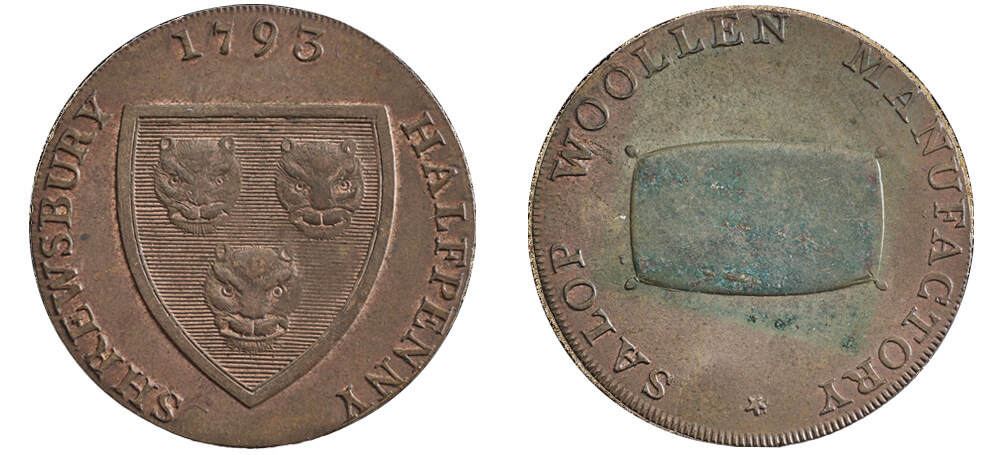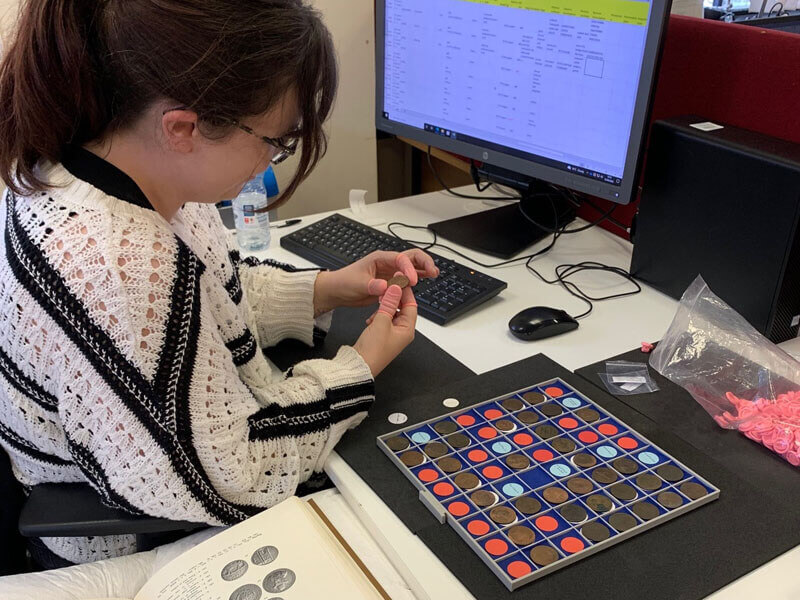British Numismatic Society Internship
By Kerry Love, PhD student and intern.
In September 2022 I was fortunate enough to be able to spend two weeks at the Royal Mint Museum, kindly funded by the British Numismatic Society. I am in the final year of my PhD looking at political objects in the late eighteenth and early nineteenth centuries, looking at the role that these objects might have played in ordinary people’s participation in political life. Coins and medals have played a significant role in this, so as you can imagine I was delighted to be able to work at a museum full of the objects I have been working on.
My task was to work through the Museum’s collection of 18th century tokens, create a record for each object, then use historic catalogues to trace their provenance. I had no previous experience working with collections in such a way, other than handling them for my own research, so it was both familiar and something very new to me! The majority of tokens in the Museum’s collection were donated from the estate of Sarah Sophia Banks. Her work collecting prints and printed ephemera has been rightly celebrated, but her token collection and impact in the field is often overlooked, so I felt very privileged to play a part in helping other researchers view this collection in the future.

I started by going through the collection, tray by tray and using the Dalton & Hamer catalogue, one I was very familiar with, to identify each token. As some had large circulation figures or were produced with only slight variations in the dies, I found this to be more time consuming than expected as it required close, repeated examination of each object in order to ensure that the record was accurate. When I was researching certain objects for my PhD over the coronavirus pandemic, I relied almost exclusively on the digitised records available at certain museums. As such, I could understand the importance of accuracy from both the museum and catalogue user’s perspectives.
Midway through the placement I got to have a tour of the Royal Mint Experience, as well as a longer talk about the Museum’s collection highlights. It was great to be able to break up the work and to see the unique way that the Museum operates alongside a business. My placement also occurred during the passing of the Her Late Majesty Queen Elizabeth II. As you can imagine being at the Mint during such an event re-emphasised the historic connection that our currency has to the monarchy and institutions of government, and it really helped me to consider how this is the case in my research.

Having said this, tokens are unusual in that they weren’t produced by the Mint, instead by local producers. I had been struggling with some of the technical aspects of how tokens operated but being able to discuss this as I worked with the Museum team, as well as using the library was invaluable to improving my numismatic knowledge. It was also great to be able to discuss museum careers with everyone to really understand how different roles interact and work together, to help me to consider which might suit me in the future after completing my PhD.
Finally, I want to thank the British Numismatic Society for funding my time at the Museum. Completing a PhD, paid work, and finding time to volunteer to gain experience working with collections had previously proved to be very difficult so the funding ensured that I could focus on the work stress-free, as well as stay and live in Wales to work with such a specialist institution that would have been difficult within commuting distance of where I live. The opportunity gave me valuable networking and career experience as well as assisted me with the completion of my PhD chapter, so it is hard to emphasise how great it was. I’m going to keep in touch and get involved with more numismatic events and I wouldn’t have if it weren’t for my placement.
